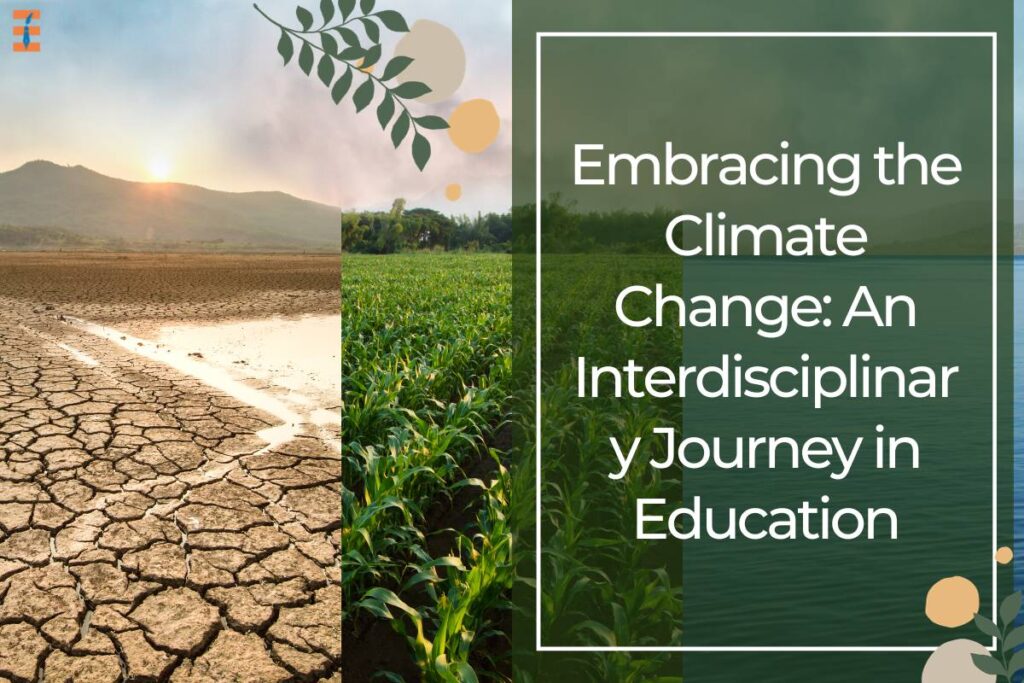As the specter of climate change looms ever larger, the imperative to educate the next generation about this global crisis becomes more urgent than ever. Adopting an interdisciplinary approach to teaching climate change is not merely a pedagogical choice but a call to arms, a recognition that the challenge we face demands a multifaceted understanding. In this article, we embark on a journey through the realms of science, humanities, and arts, exploring how an integrated educational approach can empower students to comprehend, engage with, and contribute to the complex tapestry of climate change.
Understanding the Scientific Landscape
1. Earth Science Expeditions

Take students on a journey through the intricate dynamics of Earth’s climate systems. Engage them in hands-on experiments that illustrate the greenhouse effect, ocean currents, and the delicate balance of ecosystems. The aim is to foster not only knowledge but also a profound respect for the delicate equilibrium of our planet.
2. Data Literacy in the Digital Age
Equip students with the tools to navigate the wealth of climate data available in the digital age. From temperature trends to carbon emissions, cultivating data literacy is crucial for fostering an evidence-based understanding of climate change. Interactive platforms and simulations can make these complex datasets accessible and engaging.
3. Climate Modeling and Predictions
Introduce students to the world of climate modeling. Encourage them to explore how scientists use models to predict future climate scenarios. This not only enhances scientific literacy but also instills a sense of agency, as students grapple with the implications of various climate projections.
Exploring the Human Dimensions
1. Historical Perspectives on Climate Change
Delve into history to unravel the human impact on the climate. Analyze historical events, industrial revolutions, and societal shifts that have contributed to the current climate crisis. Understanding the historical context is fundamental for students to grasp the interconnectedness of human activities and environmental consequences.
2. Social and Economic Implications
Explore the social and economic dimensions of climate change. Discuss how vulnerable communities are disproportionately affected, and examine the ethical implications of climate-related policies. This interdisciplinary lens fosters empathy and encourages students to consider the broader societal ramifications of climate change.
3. Literary Explorations
Infuse literature into the climate change narrative. Read and analyze works that explore the human experience in the face of environmental challenges. Literary discussions can provide a nuanced understanding of human emotions, cultural perspectives, and the interconnectedness between individuals and the environment.
Also Read: Tackling Ways To Prevent Climate Change: A Call To Action
Artistic Perspectives
1. Visualizing Climate Change through Art

Empower students to express their understanding of climate change through art. Visual representations, paintings, sculptures, and multimedia installations can serve as powerful tools for communication and advocacy. This artistic endeavor transcends analytical boundaries, engaging emotions and sparking conversations.
2. Climate Change in Music and Performance Arts
Explore the intersection of climate change and music or performance arts. Encourage students to compose songs, create performances, or even choreograph dances that convey the emotional and experiential aspects of climate change. This approach taps into the transformative power of the arts to communicate complex messages.
Active Engagement and Solutions
1. Community Engagement Projects
Shift the focus from theory to action by involving students in community-based climate projects. Whether it’s organizing local clean-up initiatives, tree-planting campaigns, or collaborating with environmental organizations, hands-on involvement empowers students to see the tangible impact of collective efforts.
2. Design Thinking for Sustainable Solutions

Integrate design thinking principles into the curriculum to challenge students to develop innovative, sustainable solutions to climate-related issues. This approach encourages creativity, problem-solving, and a proactive mindset as students work collaboratively to address real-world challenges.
3. Public Speaking and Advocacy
Hone students’ communication skills by incorporating public speaking and advocacy training. Equip them to articulate their knowledge and concerns about climate change, preparing them to be effective advocates for environmental awareness and policy changes.
Conclusion
An interdisciplinary approach to teaching climate change transcends the boundaries of traditional education. It is an immersive journey that empowers students not only with knowledge but with a holistic understanding of the interconnected web of science, humanities, and arts that shapes the climate change narrative. Through this interdisciplinary lens, students become agents of change, equipped with the skills, empathy, and creativity needed to confront the complexities of climate change.
Education becomes a catalyst for a generation that not only comprehends the challenges but actively participates in forging a sustainable and resilient future. In embracing this interdisciplinary approach, we embark on a shared mission — nurturing stewards of the planet who are ready to meet the climate challenge with knowledge, compassion, and action.










